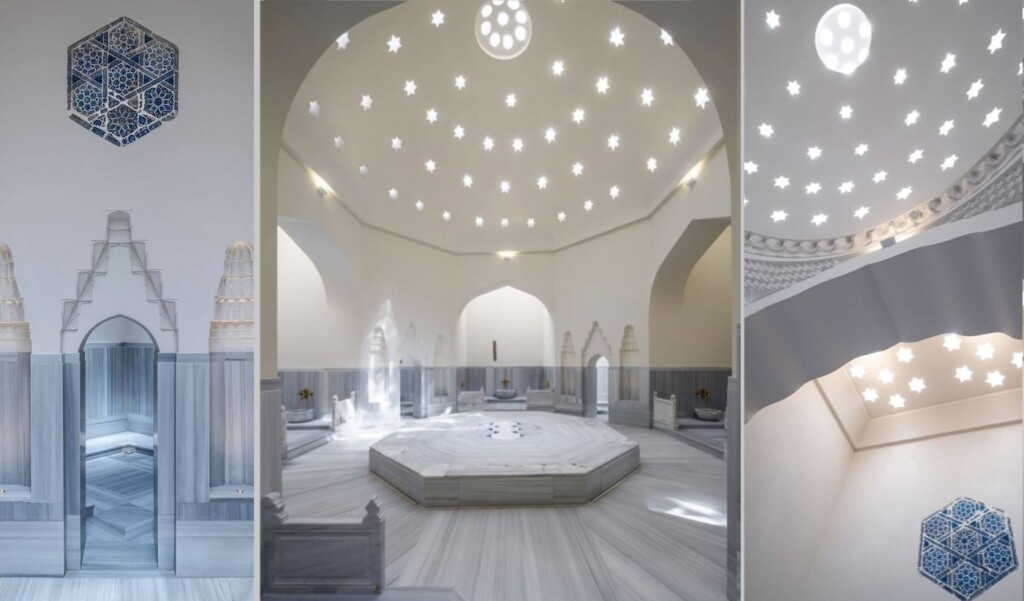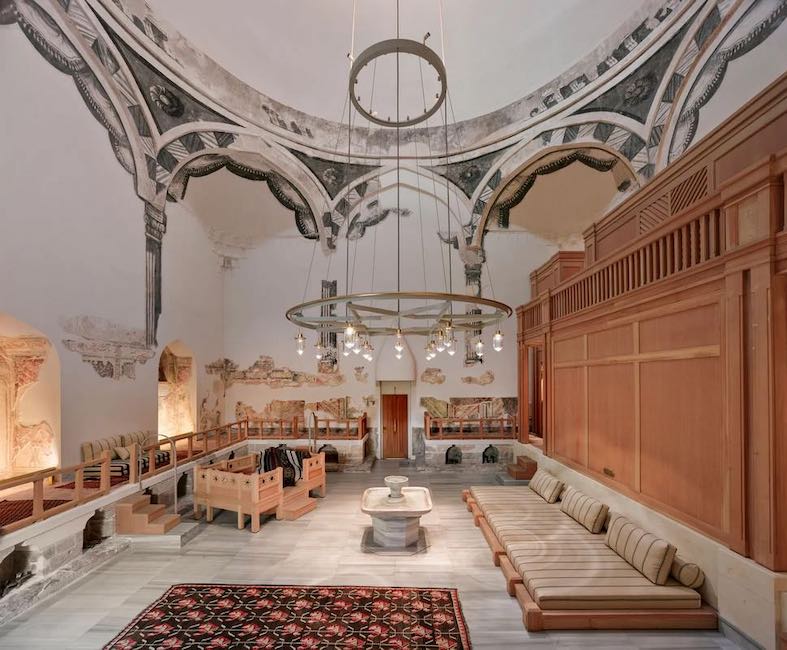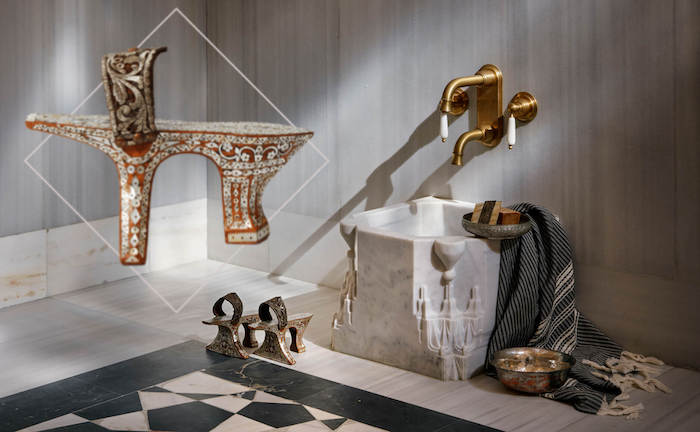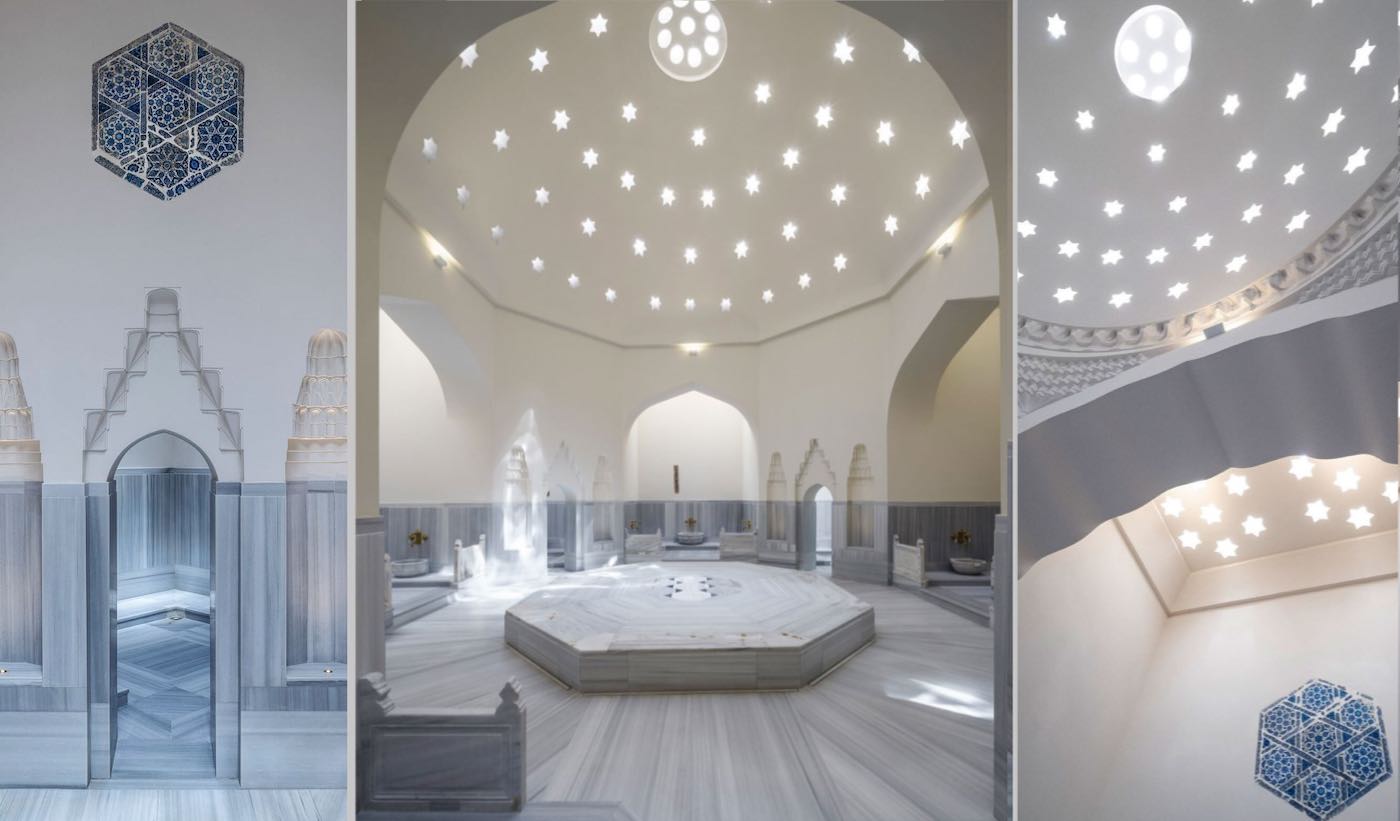
Reprinted with permission from World at Large, an independent news outlet covering conflict, travel, science, conservation, and health and fitness.
Following an extraordinary 13-year restoration project, a historic bath in Istanbul reopened after centuries of neglect. From a “nothing” state of moldy plastered walls and general abandonment, one of the most princely health and wellness centers in the Ottoman Empire has been restored to glories past.
The Zeyrek Çinili Hamam will feature antique and contemporary bathing and spa facilities, a private garden, and a museum to showcase the fascinating history of the baths and others like it.
Located in the UNESCO-listed Zeyrek District of Istanbul, the first step on the baths’ long road to restoration was a new series of archaeological digs starting in 2011 that unearthed the oldest foundations of the building, including Roman artifacts and the original cisterns built by the Byzantines which fed hot water into the baths and surrounding neighborhoods. These cisterns are the site of a new contemporary art exhibit called Healing Ruins which has opened in advance of the spa facilities.
The name of the baths, “Çinili” means tiled, and estimates based on the excavations at the site and surveys of private collections suggest that 10,000 iznik tiles, mostly in blue and white and in 37 different designs, lined the walls of the baths which once (and will again) included separate facilities for men and women and hot and cold rooms.
It was one of the earliest examples of a public space with such an elaborate tiled design, usually the preserve of royal palaces.
16th-century builder Mimar Sinan was commissioned by a royal admiral to build the baths, although they’re not often spoken of in the same glowing tone as the Selimiye Mosque or the Stari Most Bridge. He is considered the greatest architect of the Ottoman Empire and built bridges, mosques, koranic schools, and mausoleums across the whole Near East, stretching as far away as Bosnia. Many proclaim him the equal of Michelangelo.

He also built 48 public and private bathhouses, or hammams, in his time, several of which also exist in Istanbul, including the Haseki Baths near the Hagia Sophia Mosque, which also were neglected after the fall of the Ottoman Empire, and also restored in the 21st century by a hospitality group.
LOOK: Dutch 27-Year-Old Finds 1000-Year-Old Medieval Treasure Using Metal Detector
The Marmara Group, a Turkish hospitality corporation, oversaw the whole project for the Zeyrek Çinili Hamam, and enlisted architecture and design teams to reimagine the tiled interior with 3,000 original tiles and fragments that were discovered during the excavations.
A dip into the past
Press materials released of the domed ceilings in the hot and cold rooms display a truly stunning backdrop to communal bathing. In places where it could be done, the walls’ original and beautiful 18th and 19th-century paintings which once covered the hammam’s walls, but were hidden under layers of plaster for over two centuries, have been left exposed. In places where they were too ruined they have been covered over by new material.
The result is a moving reminder of the antiquity of the place.
Near at hand to the baths will be a museum dedicated to hammam culture and tradition across Turkiye and the wider world of the Ottoman Empire. Collections of intricately carved and quite obtuse wooden sandals worn by wealthy bathers, along with towels and robes, bowls, and fantastical shoes (see below). The grooming implements are on display together with an exhibit dedicated to the tiles that would have covered the walls and floors in the baths’ heyday.
WOW: Dad is Pleasantly Surprised That His Toothbrush Holder is Actually 4,000-Year-old Relic

In addition, the museum provides an insight into the baths’ ingenious water and heating system. Visitors can explore the underground Byzantine cisterns where mysterious naval carvings have been discovered on the walls. In the future, the cisterns will host a rotating program of site-specific art installations.
CHECK OUT: Amateur Treasure Hunter Unearths Missing Centerpiece of Henry VIII’s Crown — And It’s Worth Millions
Before resuming its original function as public baths, Zeyrek Çinili Hamam in Istanbul presents the contemporary art exhibition Healing Ruins. This one-off exhibition to mark the hammam’s opening takes place throughout the historic 16th-century baths and newly uncovered Byzantine cisterns.
Healing Ruins explores the possibilities for transformation at both an individual and societal level. The title purposefully carries multiple meanings, suggesting not only that ruins are inherently healing, but that the act of repairing ruins might have a transformative effect on us.
“The show is all about the discovered layers of this place,” Koza Gureli Yazgan of the Marmara Group tells the Art Newspaper. “No one knew it was there, and now it will be a contemporary space.”
SEND THIS BEAUTY (And the SHOES) to Wash Over Friends on Social Media…




















